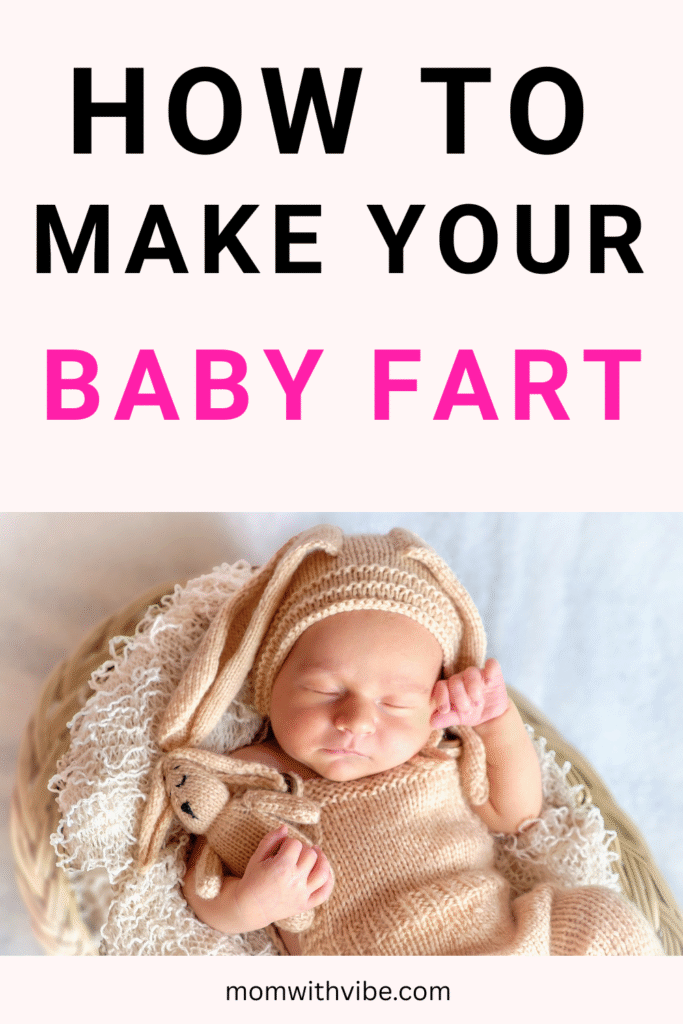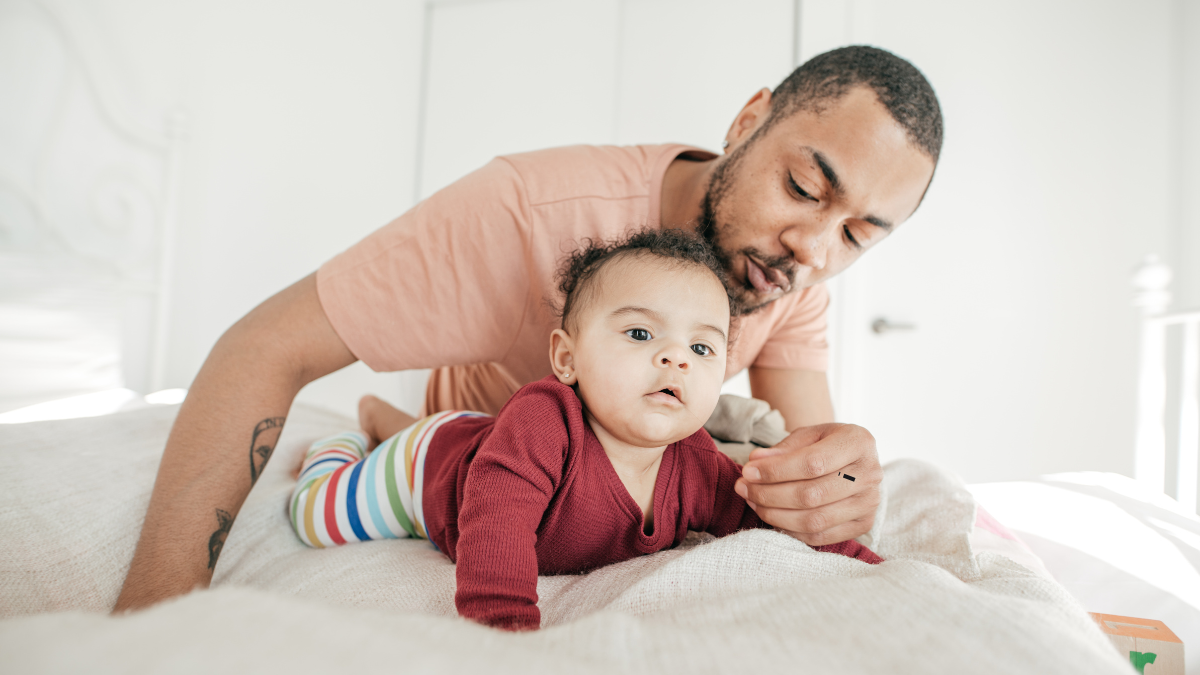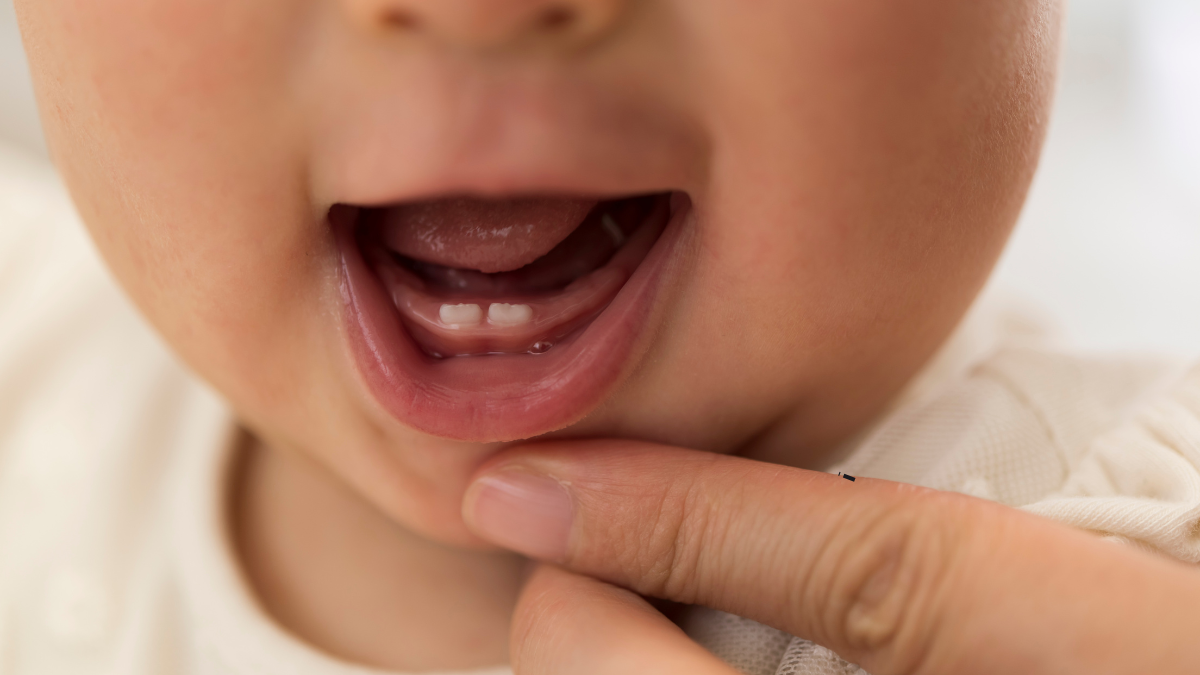One of the first things I picked up as a new parent was how gassy babies can be! Babies take in gas due to what they eat or simply because their digestive systems are still growing. The trapped gas can make the baby feel uncomfortable. Although passing gas is a natural process in the body, it can be quite aggravating for babies if the gas accumulates or they have no way to release it. Here are some easy tips to make your baby fart and alleviate the signs of strain, helping you and your baby feel comfortable.
1. Tummy Time
Tummy time is one of the most effective and easy tricks to assist your baby in passing gas. The exercise is not only fantastic for making your baby strong in bones but also helps alleviate digestive pains, such as gas.
How to do it:
- Place your baby on their stomach when they are awake, but in small increments (3–5 minutes, progressively more).
- The massaging pressure on the belly aids in the movement of gases through the bowel and facilitates digestion.
Pro Tip: Never leave your baby unsupervised during tummy time, as it could endanger their safety. Tummy time is also a great method to avert the condition of flat head syndrome.

2. Bicycle Legs
Another great technique that you can use to get your baby to eliminate trapped gas is the classic bicycle legs. This is a mild version of exercise that can work wonders for babies who feel uneasy due to gas.
How to do it:
- Place your baby on their back carefully.
- Hold both of their legs and move them like bicycle pedals, bending their knees and moving toward their chest, one at a time.
- This movement helps massage the belly, takes the tension out, and can provoke a fart.
Example: Do this just before or after mealtime, as babies tend to burp out gas during or after they eat. Alternate with mild stomach strokes for even better results.
Related: 10 Ways to Train Your Baby to Sit
3. The “I Love You” Massage
Infant massage does not only provide a relaxing effect, but it can also relieve gas. A simple method called the “I Love You” massage can help push the gas out of your baby’s tummy by applying gentle pressure along the intestines and stomach.
How to do it:
- Place your baby on their back, ensuring their belly is exposed.
- Use your hands to move along the left side of the belly in the shape of the letter “I,” then “L,” and finally “U.”
- The pressure on their belly helps the intestines push the gas forward and stimulates its release.
Research: A study published in the Journal of Pediatric Gastroenterology and Nutrition concluded that abdominal massage can be effective in relieving colic and gas in infants (Kaur et al., 2009).
4. Properly Burp Your Baby
Although burping is not a new concept to many parents, it is important to know how to burp your baby properly, particularly when bottle-feeding. The gases that are swallowed during the feeding process can also contribute to gassiness, so it’s essential to assist your baby in burping well.
How to do it:
- Hold your baby upright on your chest or on your lap.
- Gently pat or rub their back to help release the air bubbles.
- Always burp your baby after every feeding, whether they are given breast milk or formula.
Pro Tip: Try different positions to see which one works best for your baby. Some babies prefer being held on your shoulder, while others may find sitting up more effective.
Related: How to Help Your Baby Turn Head Down
5. Warm Bath Experiment
Babies can be very relaxed by taking a warm bath, which can facilitate the release of gas. The warm water helps relax their muscles, making it easier for them to pass gas.
How to do it:
- Fill a baby tub with warm (not hot) water.
- Gently place your baby in the water and let them rest for a few minutes.
- While they are in the water, you can give their stomach a gentle massage or move their legs to encourage gas relief.
Example: If your child is about to sleep at night, a warm bath is an excellent routine to incorporate into your bedtime process. The sensation of being in warm water is comforting for many babies and contributes to general relaxation.
6. Gas Relief Drops (Use with Caution)
Not always can babies take care of themselves. Over-the-counter gas relief drops, such as simethicone (brand names like Mylicon or Little Tummies), can offer relief to gassy babies.
How to use it:
- Always follow the dosage instructions provided on the packaging.
- Before using any medication, including over-the-counter products, contact your pediatrician to determine whether it is safe and suitable for your baby.
Notice: Gas drops may work, but they should not replace natural interventions like tummy time and massage.
7. Feeding Adjustments
How your baby is fed can also be a factor in gassiness. If you are breastfeeding, eat with care because some foods may pass through to your baby and cause gas. If bottle-feeding, ensure that the nipple size is not too small to prevent your baby from swallowing excess air.
Breastfeeding tip: Some babies are more gassy than others. You may find that eliminating dairy, caffeine, or certain vegetables (such as broccoli or cabbage) from your diet may help reduce gas.
Bottle-feeding tip: Use bottles designed to help your baby ingest less air, such as those with vent systems. Also, ensure the bottle is positioned so the nipple stays full of milk to prevent your baby from swallowing air.
8. Look Out for Discomfort Signs
As a parent, you will soon learn to detect when your baby is uncomfortable due to gas. Your baby may cry, clench their fists, arch their back, or pull their legs up to their chest when they are gassy.
Pay attention to your baby’s behavior, and you’ll be able to tell when they need assistance. Use one of the techniques above to help relieve their discomfort.
Frequently Asked Questions (FAQ)
1. How do I know if my baby is gassy or just crying?
It can be tricky to distinguish, but usually, a gassy baby will draw their legs up to their chest, squirm, and cry harder than normal. If your baby is farting frequently or if the crying stops after burping or farting, gas is likely the cause.
2. How many times a day should I burp my baby?
Burping after every feeding is a good practice. For bottle-fed babies, burp them every 2–3 ounces. For breastfed babies, burp them after switching sides or when they seem agitated. This helps expel any air swallowed during feeding.
3. Is it normal for my baby to cry while passing gas?
Yes, it’s normal. Crying can actually help release the gas, but if your baby seems restless or uncomfortable for a long time, try one of the methods listed above to help them pass gas more easily.
4. Is my baby farting too much?
Frequent farting is completely normal for babies. In fact, some babies pass gas as many as 13–21 times a day. If your baby seems restless while passing gas, it might be a sign that the gas is trapped, and you should try some of the techniques to help them release it.
5. Are there foods I should avoid while breastfeeding?
Yes, certain foods like dairy, caffeine, broccoli, cabbage, and beans can cause gas in your baby. Monitor your baby’s symptoms to see if any specific foods affect them, and consult your pediatrician if needed.
6. Are gas relief drops safe for my baby?
Gas relief drops containing simethicone are generally considered safe for babies, but always consult your pediatrician before using any new product, especially for babies under a month old or those with underlying health conditions.
7. How can I prevent my baby from swallowing too much air during feeding?
Make sure the nipple size is appropriate for your baby’s age and feeding habits. Hold the bottle at an angle where the nipple stays full of milk, and if breastfeeding, ensure your baby latches properly to avoid swallowing air.
8. Can a warm compress help ease gas?
Yes! A warm compress or towel placed on your baby’s tummy can help relax their muscles and promote the release of gas. Just make sure the compress is not too hot to avoid discomfort.
Final Thoughts
Dealing with a gassy baby can be frustrating, but it’s completely normal and part of your baby’s development. The good news is that with easy measures like tummy time, bicycle legs, and baby massage, you can help ease their discomfort and make both of you feel better. If your baby continues to struggle with gas or shows signs of more serious discomfort, don’t hesitate to contact your pediatrician for additional advice and treatment.
Save the pin for later




